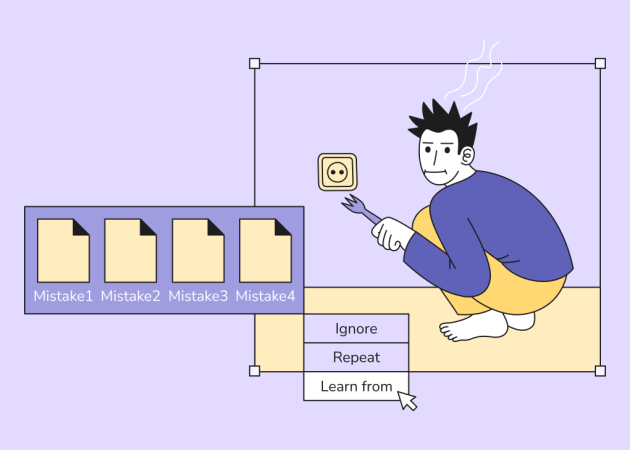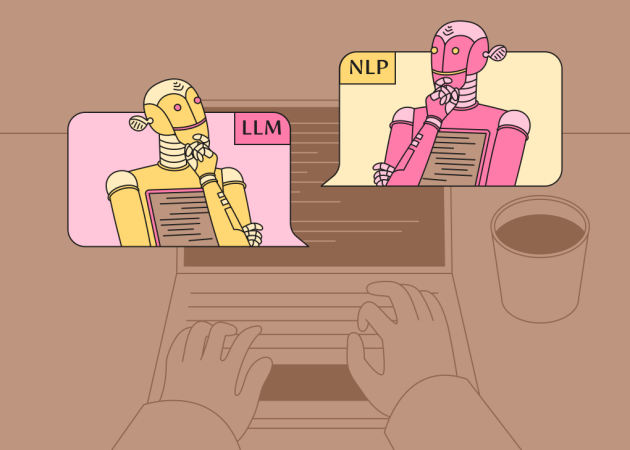
X-Raying HealthTech: Mess-up & Fix-up Stories
Contents
Contents
Beetroot recently hosted an online event covering the real and unfiltered experiences of HealthTech leaders. This event was an open invitation for professionals across the industry to engage with the raw stories of fellow startup founders and product owners who have navigated the bumps of the complex landscape of the health tech industry.
By sharing these stories, we aimed to uncover valuable lessons from their missteps, providing insights that extend beyond conventional business wisdom and fostering a better understanding of the complex, regulated world of HealthTech.
Freddie Dean on Prioritizing Essential Features
Freddie Dean, Chief Product Officer at OpenPlay, shared practical strategies and insights from his experience in navigating the product development landscape in HealthTech, highlighting the importance of focusing on essential features, balancing product viability with user loveability, and the advantages of a design-led approach.
Prioritizing Must-Have Features
Freddie shared that initially, his team was swayed by stakeholder excitement for appealing but non-essential features, leading to rushing out must-have ones and compromising functionality. Recognizing this, they shifted focus to essential capabilities critical for launch, which proved pivotal in steering the project back on track.
Balancing MVP with MLP (Minimum Lovable Product)
Freddie highlighted the balance between creating a Minimum Viable Product (MVP) and evolving towards a Minimum Lovable Product (MLP). He advised that starting with an MVP allows for quick entry and feedback, which is crucial for iterative development and long-term user engagement.
Embracing a Design-Led Approach to Drive Efficiency
Highlighting a design-led strategy, Freddie discussed how integrating design early in the development process brought clarity and efficiency, significantly reducing time-to-market. This approach allowed his team to align more closely with user expectations and streamline the refinement process, leading to better product outcomes.
Key Takeaways
- Use structured prioritization to maintain focus on essential features that directly impact core user functionalities.
- Start with an MVP to rapidly test and refine product features based on user feedback.
- Gradually evolve the MVP into an MLP to enhance user satisfaction and foster loyalty.
- Incorporate design early to align development with user expectations and streamline processes.
- Adopt a design-led approach to enhance efficiency and reduce iterative cycles.

Vital Rozhevski on the Importance of MVP in HealthTech Startup Success
Vital Rozhevski, the co-founder of NUMO ADHD, shared insights on key strategies in leading a startup such as selecting the right co-founders, rapidly developing MVPs, and strategic hiring post-PMF.
Navigating Co-founder Challenges and Market Adaptations
One of the significant hurdles Vital Rozhevski discussed was finding the right technical co-founder for his startup. He detailed the difficulties in aligning with co-founders who shared the same vision and commitment, noting that the journey involved several adjustments and reevaluations of potential candidates. To mitigate this, Vital recommends a practical approach: either establishing a probation period to assess compatibility or using outsourcing for initial product development to quickly validate ideas and gain traction without significant overhead.

Prioritizing MVP and MDP for Market Success
Vital stressed the importance of a Minimum Viable Product (MVP) for early-stage testing and learning. He believes that an MVP should be developed swiftly—within one to four weeks—to ensure that the focus remains on essential features that meet user needs effectively. This rapid development cycle is crucial for making timely iterations based on real user feedback, helping startups stay agile and responsive.
Beyond MVP, Vital introduced the concept of a Minimum Distribution Product (MDP), which is vital for initial market penetration. He outlined strategies for reaching an early adopter user base through various channels, such as social media and leveraging existing networks.
Scaling Wisely: Lessons on Hiring and Growth
A highlight from Vital’s experience was the challenge of overhiring before solidifying Product-Market Fit (PMF). He shared how expanding his team too quickly based on optimistic growth forecasts led to inefficiencies and the need to scale back.
Key takeaways
- Establish a trial period or consider outsourcing to validate your product faster without significant overhead.
- Aim to create and test MVPs within 1-4 weeks to stay aligned with user needs and market demands.
- Use a variety of channels for effective market penetration, including engaging with potential users through Reddit and LinkedIn, participating in targeted Facebook groups, and optimizing for the App Store (ASO).
- Expand your team based on actual and sustained demand, avoiding premature scaling that can lead to resource wastage.
- After achieving Product-Market Fit (PMF), focus on optimizing team efficiency to serve customers effectively rather than expanding the team size for the sake of it.
Integrating Accessibility and AI
Freddie Dean outlined OpenPlay’s dedicated approach to ensuring accessibility in their HealthTech products, particularly for projects involving public leisure centers in the UK, where compliance with accessibility laws is crucial. He also discussed how OpenPlay is exploring the use of AI to personalize health and fitness experiences through their product, Moves.
Key Takeaways:
- Ensure compliance with accessibility regulations: For projects involving public services or facilities, adhere strictly to national and international accessibility standards from the start.
- Implement inclusive design features: Design your product to be usable for people with diverse abilities. Include features like screen readers and accessible user interface elements to accommodate users with various disabilities. Pay special attention to visual elements such as color contrast and text size to ensure that people with visual impairments can navigate and use your product comfortably.
- Prioritize positive user experience: Beyond legal compliance, focus on creating an inclusive user experience that allows all individuals to engage effectively with your platform.
- Enhance personalization and efficiency with AI: Utilize AI solutions to tailor health programs to individual needs, improve backend analytics for better operational insights, and enrich user engagement by making interactions more intuitive and dynamic. This holistic approach ensures AI not only optimizes internal processes but also significantly enhances the user experience in HealthTech products.
Building Impactful HealthTech Solutions with Proven Expertise
Navigating the HealthTech landscape requires more than just technical skill—it demands a supportive community and collaborative partnerships. At Beetroot, we believe in the power of community and open dialogue to drive industry innovation.
If you’re facing the complexities of HealthTech, let’s connect. Our extensive experience in the health technology domain and cross-domain expertise in building tech teams and software solutions are at your disposal to help bring your innovative ideas to life, ensuring they make a real impact.
Subscribe to blog updates
Get the best new articles in your inbox. Get the lastest content first.
Recent articles from our magazine
Contact Us
Find out how we can help extend your tech team for sustainable growth.







